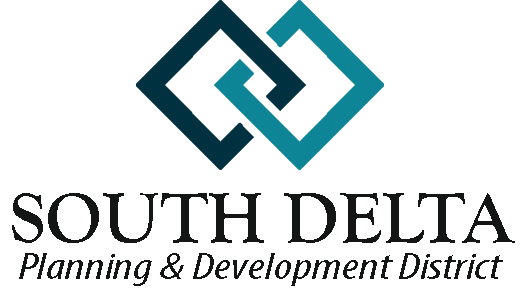Summary Background
HOUSING
Housing characteristics in the South Delta region are directly related to the environment of the population. One of the negative housing characteristics in the area, as well as in the State, is the age of housing. Of the 52,162 housing units in the six-county area 11.71% were constructed prior to 1949 and only .63% were constructed between 2014 and 2018. The majority of the housing stock in the region was constructed between 1950 and 1999. The very small percentage of new construction indicates that the current housing stock will age and deteriorate. Substandard housing units will become a bigger issue as the majority of the existing housing stock reaches the upper limits of usefulness. The percentage of housing units in the region lacking complete plumbing and/or kitchen facilities is slightly less than that

Housing characteristics in the South Delta region are directly related to the environment of the population. One of the negative housing characteristics in the area, as well as in the State, is the age of housing. Of the 52,162 housing units in the six-county area 11.71% were constructed prior to 1949 and only .63% were constructed between 2014 and 2018. The majority of the housing stock in the region was constructed between 1950 and 1999. The very small percentage of new construction indicates that the current housing stock 25 will age and deteriorate. Substandard housing units will become a bigger issue as the majority of the existing housing stock reaches the upper limits of usefulness. The percentage of housing units in the region lacking complete plumbing and/or kitchen facilities is slightly less than that of the state, .78% and 1.1% respectively. This is an indicator that some efforts are being made to improve the existing housing stock. The fact remains that these aging housing units will become more difficult to address as the numbers increase. It is also an unfortunate by-product of population loss, as well as, the regional and national economy that there is very little housing construction taking place.
According to the 2014 – 2018 American Community Survey conducted by the U. S. Census Bureau there are 19,872 renters in the South Delta area. This reflects a slight increase in renters from the 2012 – 2016 American Community Survey. Some studies have shown a need and desire among renters to become homeowners; however, financing for lowand moderate-income families is often difficult or even impossible to obtain. Experience has shown that not everyone with a desire to own a home is capable of doing so. South Delta has, when programs were available, attempted to address this need through some innovative financing and down payment assistance. These programs, that were available to specific units of government, have virtually disappeared. The programs that are now available are on an individual basis and no longer involve local governmental units.
According to the 2014 – 2018 American Community Survey conducted by the U. S. Census Bureau there are 19,872 renters in the South Delta area. This reflects a slight increase in renters from the 2012 – 2016 American Community Survey. Some studies have shown a need and desire among renters to become homeowners; however, financing for lowand moderate-income families is often difficult or even impossible to obtain. Experience has shown that not everyone with a desire to own a home is capable of doing so. South Delta has, when programs were available, attempted to address this need through some innovative financing and down payment assistance. These programs, that were available to specific units of government, have virtually disappeared. The programs that are now available are on an individual basis and no longer involve local governmental units.
A number of the 24,385 owner-occupied units in the area are in need of minor to major repairs. The district from 2005 to 2015 assisted local units of government with reconstruction/rehabilitation projects that addressed 137 sub-standard, dilapidated housing units. This program was extremely helpful to many low and very low-income homeowners. Unfortunately, since 2015 the program has changed administrative agencies and shifted priorities. These factors along with very limited funding for HOME (Home Investment Partnership Program) have made it nearly impossible to help those homeowners that are truly in need.
With the realization that it is very much a component of economic development, housing has become an issue in the area. Housing stock deficiencies, especially houses affordable to middle income families are a serious deterrent to industries that may desire to locate here. Houses are not being built in the district. According to some urban and regional planners, “if you aren’t building, you are dying”.
